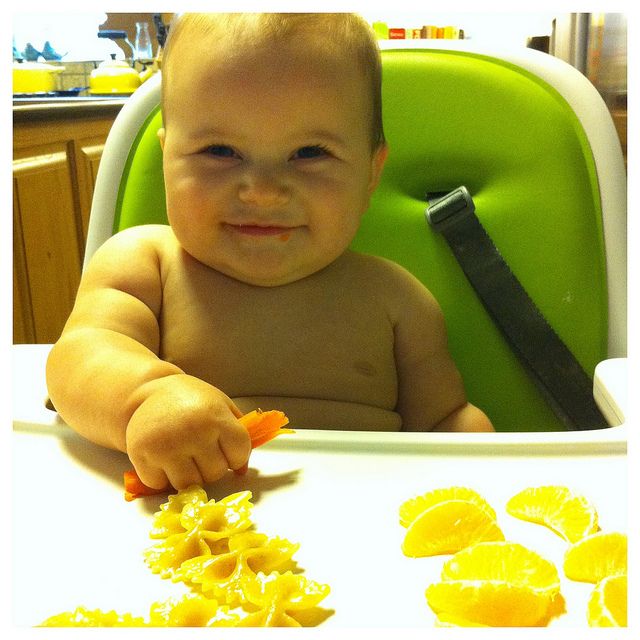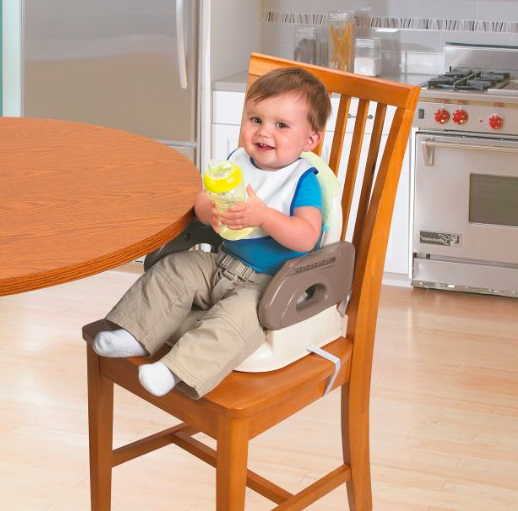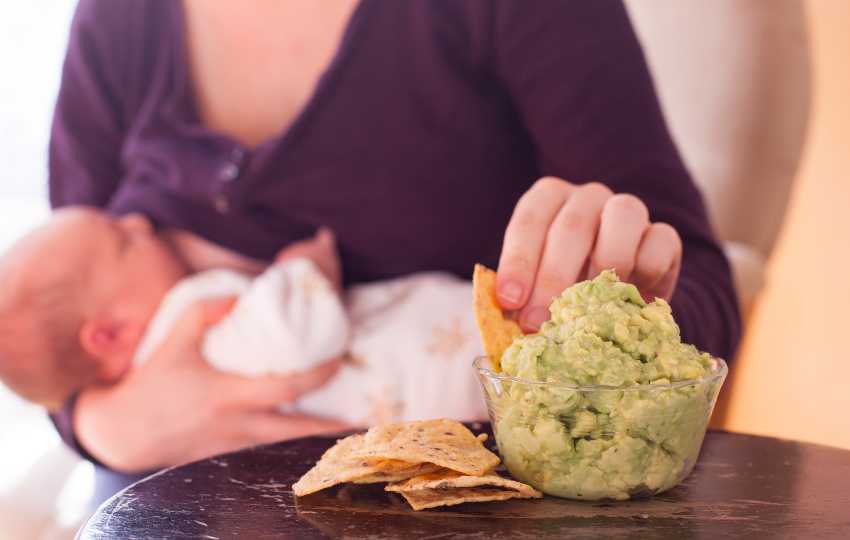Food schedule for one year old baby
1 Year Old Feeding Schedule (With Sample Meal Plans)
Here’s a look at sample one year old feeding schedules to help you manage (or create!) your routine. I have options for one year olds taking bottles, being breastfed, or being on all solids—plus sample menu plans!
One Year Old Feeding Schedule
Once a baby turns one and is eating meals and snacks, it can help to establish a routine to make it all easier on you to manage. Feeding kids is a lot of work and a basic feeding schedule is a great place to start.
This is meant to offer guidance and to be adjusted for your reality, whatever that may look like, since I know that no two families have the same schedules or eating preferences.
Sample 1 Year Old Feeding Chart
I’m going to share three versions of a sample feeding charts to give you an idea of the time intervals between meals based on when the kiddo wakes up and goes to bed. Generally speaking, 2-3 hours between solid food is a good rule of thumb—though always remember that your child may be hungrier some days than others and may need that timeframe adjusted.
Version 1
This example is for a toddler who’s taking milk in a sippy cup with meals (or drinks water with meals). Let’s assume wake up time is a little after 6 and bedtime is 7 pm. There may or may not be a morning nap, but there is an assumed afternoon nap from about 1-3 pm.
- 6:30 am: Breakfast
- 9 am: Snack
- 12 pm: Lunch
- 3 pm: Snack
- 5:30 pm Dinner
TIP: There could be a simple Bedtime Snack in the mix if needed before bed.
Version 2
This example is for a toddler who’s still drinking bottles and has water with meals. Let’s assume wake up time is 7 and bedtime is 8 pm. There may or may not be a morning nap, but there is an assumed afternoon nap from about 1-3 pm.
- 7 am: bottle
- 8 am: Breakfast
- 10 am: Snack
- 12 pm: Lunch
- 1 pm: bottle
- 4 pm: Snack
- 6 pm Dinner
- 7:30 pm: bottle
TIP: We want to wean kids from bottles by 2 at the latest, and the sooner you do it, the easier it often is.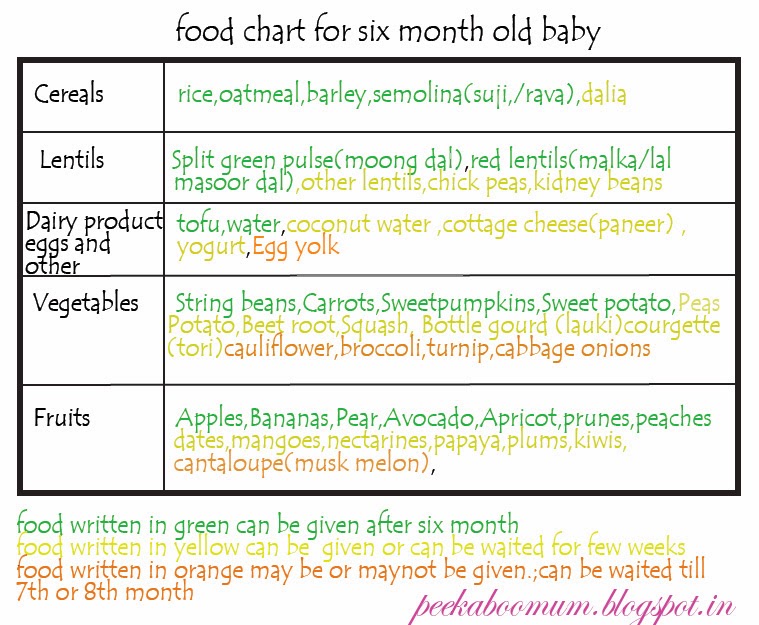 Work on transitioning the milk consumption to be with meals during the one year old year, rather than separate standalone bottles, especially if it seems to be limiting hunger for solids.
Work on transitioning the milk consumption to be with meals during the one year old year, rather than separate standalone bottles, especially if it seems to be limiting hunger for solids.
Version 3
This example is for a toddler who’s breastfed and has water with meals. Let’s assume wake up time is 6:30 am and bedtime is 7:30 pm. There may or may not be a morning nap, but there is an assumed afternoon nap from about 1-3 pm. There of course may be more nursing sessions in the mix here if the child is nursed on demand, so adjust as needed for your real life.
- 6:30 am: breastfeeding
- 7:30 am: Breakfast
- 9:30 am: Snack
- 12 pm: Lunch
- 1 pm: breastfeeding
- 4 pm: Snack
- 6 pm: Dinner
- 7 pm: breastfeeding
TIP: If the child doesn’t seem hungry for snacks, you don’t always have to do them. They may be full from the breastmilk and solids. If breast feeding seems to be limiting hunger for solids, you can consider tapering down the daytime sessions if you want. (No pressure, just know that some kids aren’t hungry enough for all meals and snacks and breastmilk during their one year old year so something could be adjusted if desired.
(No pressure, just know that some kids aren’t hungry enough for all meals and snacks and breastmilk during their one year old year so something could be adjusted if desired.
1 Year Old Meal Plan
I prefer to have a general framework for when meals happen because it helps me to plan the rest of the day. It also helps the kids to generally know what to expect and when, even if it’s as simple as learning that we go outside after morning snack and do our bedtime routine after dinner.
TIP: Find a week’s worth of Sample Meals for Toddlers here.
Frequently Asked Questions
How often do you feed a 1 year old?
Toddlers generally eat around every 2-3 hours, but that may vary depending on their own unique hunger.
How many bottles should a 1 year old have per day?
After turning 1 year, a child may be having a few bottles, but we want to transition over to sippy cups of milk served with meals by 18-24 months.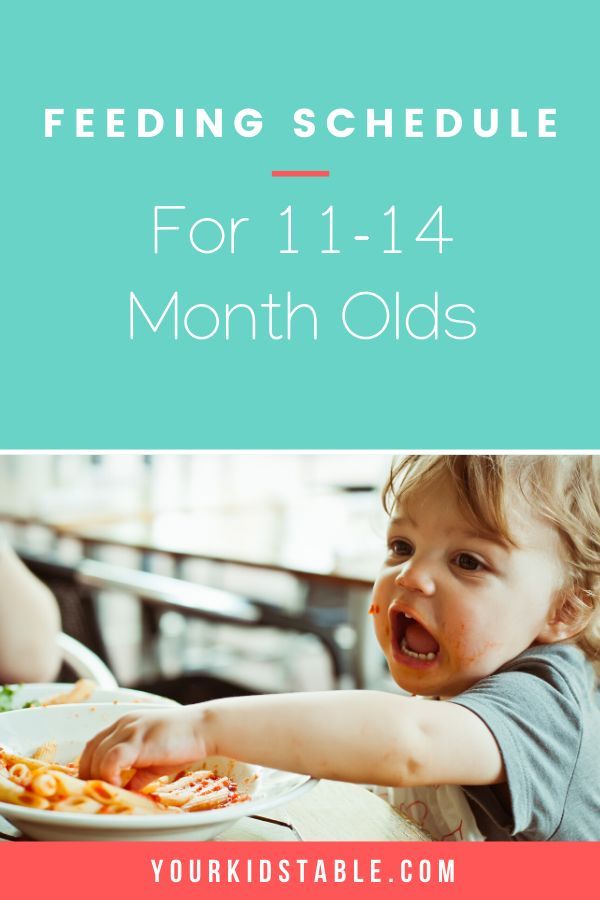 If the child doesn’t seem hungry for solids, that could be a good reason to start tapering down separate milk feedings.
If the child doesn’t seem hungry for solids, that could be a good reason to start tapering down separate milk feedings.
How many meals should a one year old have each day?
Most one year olds eat 3 main meals and 2 snacks. That may vary based on whether there are bottles or breastfeeding in the mix.
How many oz should a one year old eat?
The best guide for the amount of food any child should eat is their own unique hunger. Start with smaller portions and allow more according to their hunger. (Read more about the Division of Responsibility in Feeding for more of the reason behind approaching meals this way.)
Why doesn’t my one year old eat foods they loved as a baby?
There are may possible reasons, but there are two common ones. First, one year olds grow less rapidly than they did as babies and are often less hungry. This may mean they eat fewer and less foods than they used to. Second, there is a normal developmental phase known as neophobia where kids are more fearful of new and less familiar foods.
This may mean they eat fewer and less foods than they used to. Second, there is a normal developmental phase known as neophobia where kids are more fearful of new and less familiar foods.
Both can happen at this age and can look like “pickiness” to parents. (It’s frustrating, I know, but my goal is to simply point out that there are often clear reasons behind the behavior we’re seeing.)
Picky Eating in One Year Olds
I hear from a lot of parents with 14-19 month olds who are suddenly “picky” and aren’t interested in the food that they used to love as a baby. Here’s what to keep in mind if that describes your situation:
It is very normal for one year olds to grow less rapidly than they did as babies, and to have a correspondingly lower appetite. It is very common for parents to see kids eating less and fewer foods and assume it’s “pickiness” when in fact the child is simply not as hungry as we expect them to be.
Try serving smaller portions, spacing out meals or snacks a bit, and letting it be okay if the child eats less than you expect.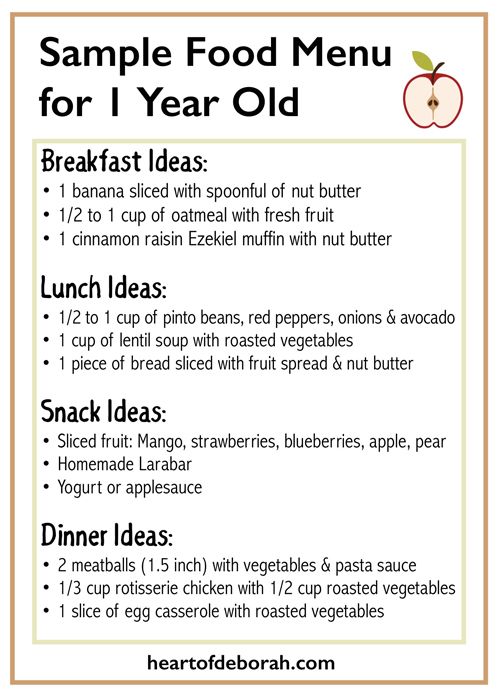
Also developmentally, kids this age are exploring all of their boundaries—from the color of their socks to the fork they prefer to whether or not they want to walk on the sidewalk—so it’s normal to see some of this show up at the dinner table.
This is not a sign that anything is necessarily wrong, but is it usually a normal part of the kids realizing they are independent from us, have the power to say “no” (and get a reaction), and voice their opinions.
Remember: It’s not your job to “get” your child to eat. It’s your job to offer a variety of food that is tasty, easy for them to chew, and developmentally appropriate. It’s also our job to set the routine for when and where meals happen and what things are like during meals—we sit in our chairs, we don’t throw our food, etc. It’s their job to decide how much of the food to eat and which foods.
If we expect these factors during toddlerhood, it’s much easier to empathize and understand why they are happening—and realize that our kids are doing the normal work of figuring out their world.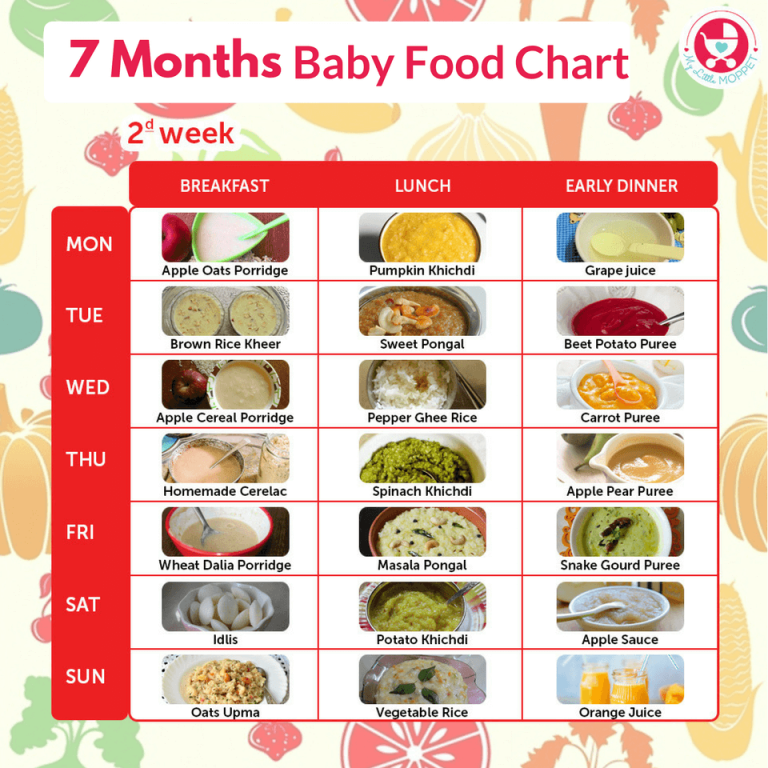
TIP: Toddlers go through a normal phase called “neophobia” where they are naturally more skeptical of less familiar foods (or even foods they haven’t seen in a few days or weeks). Read up on that developmental stage so you can keep what you’re experiencing in perspective.
How do I know if my toddler is eating enough?
The general rule of thumb is to consider if the child is growing, gaining weight, and meeting milestones. Do they mostly seem happy? If the answers to all of those are yes, chances are very high that the kiddo is eating plenty. But, if your gut tell you that something is off or your pediatrician is concerned with growth (such as falling off of the child’s own unique growth curve), you may need additional help from your pediatrician or a feeding therapist.
TIP: I recommend Thrive by Spectrum Pediatrics and Lutz, Alexander & Associates Nutrition Therapy for personalized feeding therapy. My ebook How to Relax about Picky Eating can help too.
Best Tips for Success
- Plan to have a general feeding schedule, that can adjust to realities of life, to make it easier on you to plan—and easier for the kids to know what to expect from their day.
- Allow 2-3 hours between solids, adjusting for the child’s hunger as needed.
- Aim to transition off of bottles by 18-24 months. (And learn why you don’t need Toddler Formula unless medically advised.)
- Here are more Sample Toddler Meal Plans to refer to as the kids grow and a basic Toddler Nutrition Chart.
- Learn more about how to Wean a Toddler and how to Night Wean.
- If you’re worried about picky eating, this post on what’s normal will help.
- For help on understanding how to trust the kids to eat to their own unique fullness, start with the Division of Responsibility and then see this post with FAQ on Picky Eating.
I’d love to hear your feedback on this post, so please comment below to share!
Easy Feeding Schedule for 1 Year Olds
11, 12, and 13 months plus can be a difficult time to determine a feeding schedule with so many transitions from baby food and bottles.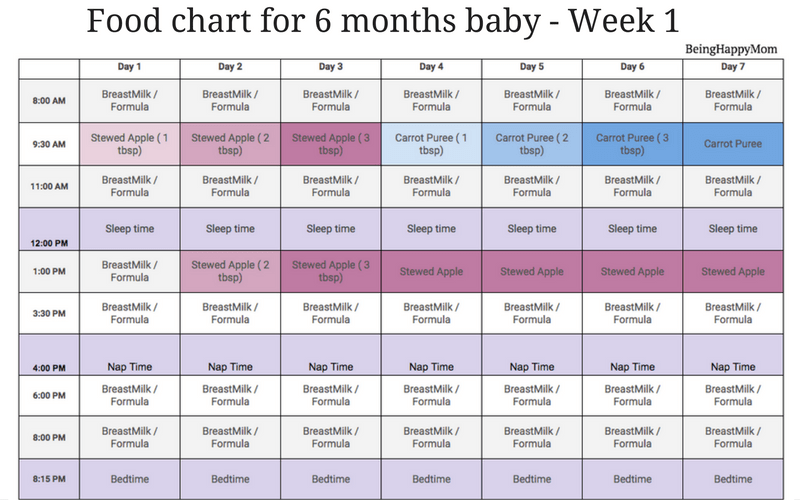 Get these sample feeding schedules for 1 year olds from a feeding expert and mom.
Get these sample feeding schedules for 1 year olds from a feeding expert and mom.
This post is sponsored by Litecup USA.
A baby’s first year is filled with many changes, and as it comes to a close around 11 to 12 months, often one of the biggest changes is fully transitioning to table foods and totally leaving behind baby food. At the same time, parents are also trying to navigate how to wean from breast or bottle. Many parents feel overwhelmed and are unsure how to make these changes, and understandably so.
Although I cover transitioning to table food and bottle weaning here in lots of detail, it is important to have a feeding schedule in mind too because it helps make these big transitions successful. Today, I’m sharing three sample schedules with you that I use as a licensed occupational therapist for babies 11, 12, and 13 months old. Basically, a feeding schedule for 1 year olds, so you can see how to make the transitions work for you.
It is fitting that the sponsor of this post is Litecup USA, a no-spill open cup that also lights up! I know, I’m blowing your mind. Think how perfect that will be when you’re in the car in the evening or to have on the nightstand for a quick sip if they need it in the middle of the night! It is genius! And, it’s fun! Kids, including mine, love it. You will find more in the post about when and why an open cup is great for toddlers.
Feeding at 11, 12, and 13 Months (Aka The 1 Year Old!)
If I had to pick one word to summarize feeding babies at this age, it would be: unpredictable. Honestly, they are so busy and easily distracted that at some meals hardly anything is eaten and others they may seem to eat more than you. This is normal, and I want you to keep that mind. It is important to not jump through too many hoops to get your child to eat, because they will soon learn how to wield that power. Setting up a routine and schedule around meals goes a long way in curbing the unpredictability and potential picky eating.
I would also encourage you to move completely to table foods by 11 months, if you haven’t done so already. An occasional pouch is okay when you are out and about, but by this age babies should be eating a variety of table foods. The schedules I share below are made based on this assumption. See further down in the post if your child is having difficulty with this transition.,
In my 8-10 month old feeding schedule, I recommended introducing a straw. If you haven’t done that yet, no problem, they will likely pick it up very quickly. While the straw is a great choice, at this age, your child may be ready to drink from an open cup. I know how shocking that sounds. It is a surprise to most parents, but stay with me.
Open cup drinking is an important developmental skill, and challenges children to use the muscles in and around their mouth in new and different ways. This helps them progress with managing different types of food, as well as their speech. Great, right? But, what about the mess? It is true that there will be a lot of spills and wet shirts with traditional open cups, or you can use a Litecup that has all the benefits of drinking from an open cup without any of the mess! Win- win! I love it, it is the best of both worlds. So be brave and give the open cup a chance. It is a wonderful tool to add into your routine, as you can serve your child’s milk and water in it during mealtime.
So be brave and give the open cup a chance. It is a wonderful tool to add into your routine, as you can serve your child’s milk and water in it during mealtime.
Because this is a time of transition, I’m going to share with you three schedules so that you can see the transitions. First, you will see the schedule at the beginning of 11 months, then you will see it once the baby is weaned, usually around the first birthday or in the next few months. In the latter case, I gave you samples for either one or two naps, as this is often a transition at this age too! Of course, all of these factors vary from child to child.
Get more specifics for bottle weaning and breast weaning.
*Learn 5 Big Mistakes that Parents (Unknowingly) Make When Feeding Their Baby or Toddler Table Foods in my free workshop. And, learn what to do to help them eat well!*
*This schedule is just a sample. Your child may sleep at different times and you will need to adjust accordingly. I suggest taking note of the time intervals so that you can apply to you child’s individual schedule. You can use this 1 year old sleep schedule as a reference.
I suggest taking note of the time intervals so that you can apply to you child’s individual schedule. You can use this 1 year old sleep schedule as a reference.
6:30-7:00 AM: Wake-Up – Breastfeed/Bottle upon waking *This is usually the second to last feeding you will take away. Sometimes it’s the last if your child is more attached to this than the night time feed.
7:00-7:30 AM: Breakfast – Water available in an open cup or straw cup, table foods (include a fruit/veggie, carbohydrate, and protein).
9:30 AM: Nap
11:00 AM: Breastfeed/Bottle upon waking *This is usually the first milk feeding I take away, if there are no complaints from the baby, and I promptly feed them lunch instead with milk in a cup. Some babies may start to nurse or take very little from a bottle earlier than their birthday. It is okay to follow their lead.
11:30-12:00 PM: Lunch – Water in a straw cup, table foods (include a fruit/veggie, carbohydrate, and protein).* Give milk at this meal once the previous formula/breast milk is eliminated. )
)
1:30-2:00 PM: Nap
3:30 PM: Breastfeed/Bottle upon waking, immediately followed by an optional small snack such as fruit and crackers/dry cereal/rice cake. *This is typically the second bottle or breast feeding I take away, but it can be the first if this works better. Once this bottle is gone, offer milk in a cup and some protein to the meal like peanut butter, hummus, cheese, or beans.
6:00 PM: Dinner – Water in an open cup or straw cup, table foods (include a fruit/veggie, carbohydrate, and protein).
7:30- PM: Breastfeed/Bottle before bed *Typically this is the last breastfeed or bottle you will take away, and it can be the most difficult. However, feedings at this time won’t interfere with their other meals.
7:45-8:00 PM: Sleeping for the night
*Times are given in a range of possible start times, not duration. If you are concerned about how much your baby needs to eat, see this post on Portion Sizes.
Specifically, this is an example around 12 – 13 months
7:30 – 8:00 AM: Breakfast – 15-30 minutes after waking. About 4 oz. of milk in an open cup or straw, a protein, carbohydrate, and fruit/veggie.
About 4 oz. of milk in an open cup or straw, a protein, carbohydrate, and fruit/veggie.
10:30 AM: Nap
12:00 PM: Lunch – 15-30 minutes after waking. About 4 oz. of milk in an open cup or straw, a protein, carbohydrate, and fruit/veggie.
2:30 PM: Snack – About 4 oz. of milk in an open cup or straw, a protein, carbohydrate, and fruit/veggie.
3:00 PM: Nap
5:30 – 6:00 PM: Dinner – About 4 oz. of milk in an open cup or straw, a protein, carbohydrate, and fruit/veggie.
Beginning around 12-13 months Old
7:30- 8:00 AM: Breakfast – 15-30 minutes after waking. About 4 oz. of milk in an open cup or straw, a protein, carbohydrate, and fruit/veggie.
11:00 AM: Lunch – About 4 oz. of milk in an open cup or straw, a protein, carbohydrate, and fruit/veggie.
12:00 PM: Nap
2:30- 3:00 PM: Snack – 15-30 minutes after waking: About 4 oz. of milk in an open cup or straw, a protein, carbohydrate, and fruit/veggie. *This meal should include all the elements listed, but will be on a little smaller of a scale.
5:30 – 6:00 PM: Dinner – About 4 oz. of milk in an open cup or straw, a protein, carbohydrate, and fruit/veggie.
A Few Feeding Tips
- Milk should be around 16 oz. total for the day after 1 year of age.
- Ideally, meals should be spaced 2.5 – 3 hours apart, counting from the start of one meal to the start of the next.
- Babies and toddlers are capable of feeding themselves a lot of food at this age. Yes, it’s messy, read the benefits here. I encourage you to allow them to feed themselves as much as possible, even with a spoon!
- If your baby is gagging a lot or you’re nervous about their occasional gag, then head to What You Need to Know About Baby Gagging.
- Try to have as much variety in your toddler’s diet as possible, ideally not serving the same thing two days in a row. Need some inspiration? I’ve got you covered! See The Mega List of Table Foods or The Ultimate List of Meals for Toddlers.
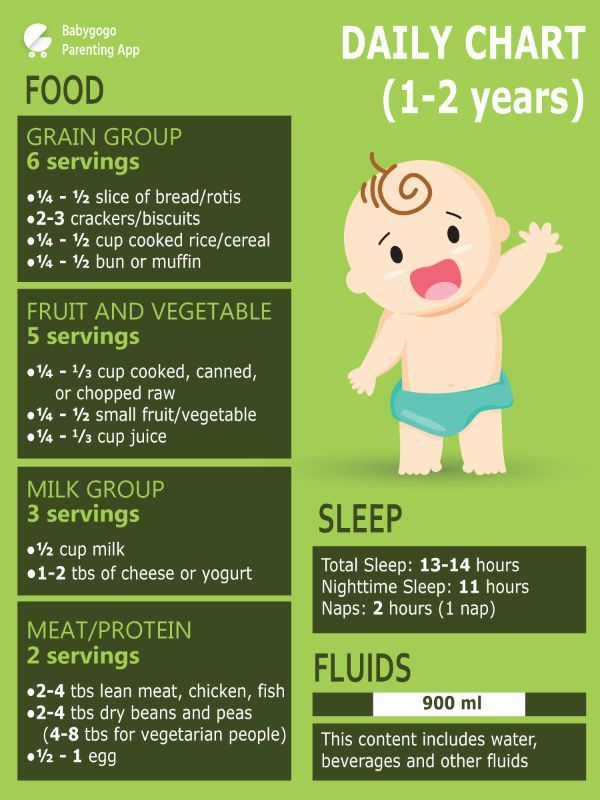
- If you’re concerned about how many calories they’re eating or need to increase your babies weight, then see High Calorie Foods for Babies.
- Around this time you may also be considering getting rid of the binky or dummy, if so, I’ve got a guide that will help you know when and how to do it. Check out Everything You Need to Know About Pacifier Weaning.
What If This Eating Thing Isn’t Going Well?
If you feel like your baby isn’t getting the hang of table foods or is consistently eating very small amounts of food at 10 months of age, then I would strongly suggest scheduling an evaluation through early intervention (if you live in the states) or seeking out a private or outpatient therapist. I also have this free printable: Learn to Eat Table Foods Cheat Sheet, that I’ll send right to your inbox. It has a step-by-step plan and some other tips that will be helpful.
Get the Free Printable Here!
Unfortunately, many times, pediatricians advise to wait it out, but trained feeding therapists (usually OTs and SLPs) are able to catch early signs of underlying sensory or motor difficulties. The earlier these problems are addressed, the easier they are to overcome. Head to Everything About Feeding Therapy to read more.
The earlier these problems are addressed, the easier they are to overcome. Head to Everything About Feeding Therapy to read more.
More on Feeding Schedules for Babies from Your Kid’s Table
The Best 6 and 7 Month Old Feeding Schedule, So Easy to Follow
Introducing Baby Food: Everything You Need to Know
The Ultimate Guide to Feeding Milestones for Babies and Toddlers
Feeding Red Flags for Babies and Toddlers
Did You Pin This?
You’ll want to check this out again! Pin it here or hover/tap on any image to get the pin it button.
Alisha Grogan is a licensed occupational therapist and founder of Your Kid’s Table. She has over 14 years experience with expertise in sensory processing and feeding development in babies, toddlers, and children. Alisha also has 3 boys of her own at home. Learn more about her here.
Union of Pediatricians of Russia
Nutrition for children from 1 to 3 years of age
The period from 1 to 3 years of life is a crucial stage in the transition to an adult type of nutrition, which has certain features. In order to ensure that all the necessary nutrients enter the child's body and at the same time prevent an excess of individual nutrients, nutrition should be balanced and varied.
In order to ensure that all the necessary nutrients enter the child's body and at the same time prevent an excess of individual nutrients, nutrition should be balanced and varied.
The daily amount of food for children aged 1 to 1.5 years should be 1000-1200 g, from 1.5 to 3 years - 1200-1500 g, the amount of food in one feeding should not exceed 300-350 ml. The diet consists of three main meals per day and two snacks. It is considered optimal when breakfast is 25% of the total energy density of the diet, lunch is 30–35%, dinner is 20%, and additional meals are about 10%. In general, the child can eat the same food as the rest of the family.
In the diet of a child of 1–3 years of age , must be present daily: meat of animals or poultry, dairy and sour-milk products, vegetables, fruits, bread, cereals, vegetable and butter; fish and eggs are included in the diet 2-3 times a week.
Cereal products: bread - 2-3 servings per day, cereals and side dishes - 1 time per day
Fruit and/or vegetables: at least 5 times a day
Dairy products: at least 3 servings per day (including those used to make cereals, yoghurts, fermented milk drinks, cottage cheese, infant formula or breast milk).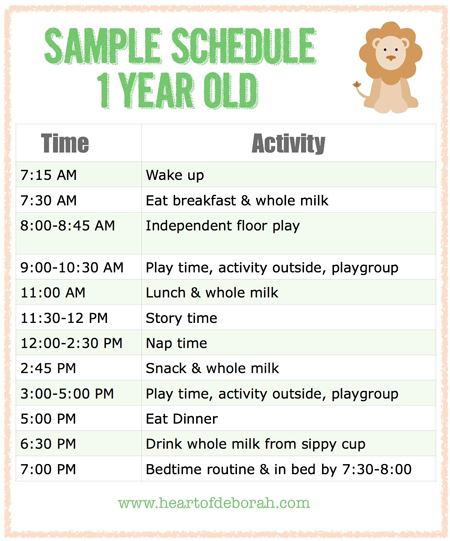
Domestic pediatricians recommend, when compiling a diet for children aged 1–3 years, preference should be given to specialized children's dairy products of industrial production that meet high quality requirements and safety indicators for this age. Most children's dairy products are additionally enriched with vitamins and/or minerals and other biologically active components, taking into account the physiological needs of children of this age. At the same time, in foreign recommendations, children over 1 year old are offered the gradual introduction of whole cow's milk, which is rich in fats necessary for proper growth and development, the absorption of vitamins A and D, the development of the brain and nervous system of the child.
Meat dishes: 2-3 times a day
Fish dishes: 2-3 servings per week
Eggs: 2-3 per week
Dietary fats: 3-4 teaspoons of butter and/or vegetable oils per day
When cooking, use the minimum amount of salt and sugar, and do not add them to industrial products.
Offer your child a variety of foods and let them choose for themselves. Children love to eat on their own, so if possible, offer food that the child can eat with their hands.
It is important to remember that a baby can choke on pieces of food, so whatever you give your baby should be crushed or cut into small pieces that can be easily chewed.
Do not give to a small child: nuts, whole grapes, cherry tomatoes (unless quartered), whole carrots, seeds (such as pumpkin or sunflower seeds), round candies, legumes, raisins, because a child can eat them choke.
Also in the diet of children of the first 3 years of life should not be present:
Mushrooms; canned snacks, pickled vegetables and fruits
Home canned food
Dry concentrates for side dishes
Hot sauces, mustard, horseradish, pepper, vinegar, mayonnaise
Natural coffee
Juices and drinks in the form of dry concentrates; sweet carbonated drinks
Products containing food additives (flavorings, dyes of artificial origin, including chewing gum), popcorn
Combined fats; cakes and pastries
It is important to remember that children of this age should not be given too spicy and spicy foods.
How to feed a child at 1 year old? Balanced baby nutrition: sample diet
Proper nutrition of a child in a year is an important condition for harmonious growth and development. In addition, a properly composed diet helps to strengthen the immune system. Receiving new products, the baby gradually gets acquainted with the diet. Pediatricians advise paying attention to the child's diet, its proper balancing.
Nuances of nutrition
The diet of a child in 1 year is subject to the following principles:
- should be complete, meet all the needs of the body, provide vitamins, micro- and macroelements;
- diversity. As many combined foods as possible should be present in the diet daily;
- all food must be chopped.
To properly balance the diet, it is necessary to include specialized foods. They should be designed according to the needs of the child's body in a year. If you have any doubts or questions regarding the nutrition of your baby, you can seek advice from our doctors.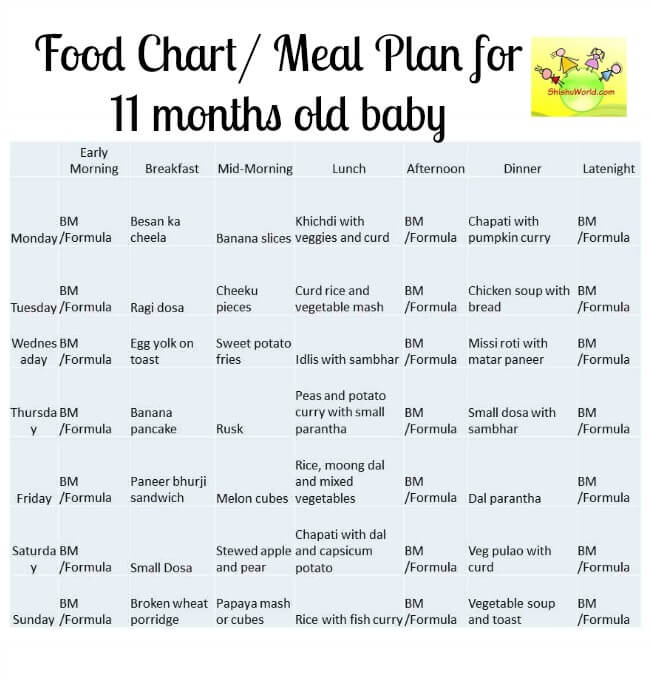 They will remotely select an individual diet, tell you about all the nuances of the nutrition of one-year-old babies.
They will remotely select an individual diet, tell you about all the nuances of the nutrition of one-year-old babies.
Diet must not be violated
The most advantageous is the diet according to the schedule. An individual nutrition program contributes to the rapid accustoming of the child to the daily routine. Even intervals between meals will not let the baby get hungry. According to the WHO, a child's diet at 1 year old should include breakfast, lunch, dinner, and an afternoon snack.
Meal plan for the day:
| Name | Description |
| 9.00 - breakfast | If the child gets up early, in this case it is permissible to feed an hour earlier. All other meals are shifted by an hour |
| 12.30 - lunch | Before dinner, it is recommended to take a walk, which will increase the appetite. |
| 16.30 - afternoon snack | The amount of food is small. Eating easy |
| 19.00 - dinner | Dinner is served on the table two hours before bedtime. |
Important! When preparing food, it is necessary to refuse zazharki, fatty and fried foods. The first meat broths merge. Salt and sugar are added in a minimal amount.
Which products to prefer
WHO recommends including the following foods in the children's menu:
- dairy products. Children under the age of one year do not give milk in its pure form. It is replaced with breast milk or mixtures. Kefir and yogurt are introduced gradually. Their fat content should not exceed 3.2 percent. Sour cream and cheeses are allowed to be given no more than twice a week;
- cereals.
 Porridge for a one-year-old child is given only for children. Adult coarse cereals are poorly digested in the baby's body. Allowed: oatmeal, buckwheat, millet, corn, rice porridge;
Porridge for a one-year-old child is given only for children. Adult coarse cereals are poorly digested in the baby's body. Allowed: oatmeal, buckwheat, millet, corn, rice porridge; - vegetables fruits. By the age of 1, the child is familiar with apples, pears, bananas, prunes, zucchini, broccoli, carrots, potatoes. After a year, kiwi, beets, peas, apricots, beans are introduced into the diet. Legumes are given twice a week. The rest of the vegetables and fruits are allowed for use every day;
- meat fish. Hake, pollock, cod are given twice a week, low-fat meat varieties - daily;
- oil. Butter and vegetable oils are added to ready meals. If the child already chews well enough, it is permissible to smear butter on bread. vegetable oils are chosen only unrefined;
- eggs. Up to a year it is allowed to introduce quail eggs, after a year they give chicken no more than three times a week.
Case study: One-year-old Pasha's mother made the following menu for him for the day, which she plans to feed him until he is 1. 5 years old: For breakfast, porridge/vegetable dishes, cottage cheese 200 g, drink 100 ml. Lunch consists of salad - 30 g, soup - 50 g, second meat course - 50 g, vegetables / cereals - 70 g, compote - 100 ml. For an afternoon snack, mom offers ryazhenka or kefir - 150 ml, cookies, crackers - 15 g, juice, fruits - 100 g. For dinner, cereals / cottage cheese / vegetables are served - 180 g, fermented milk products - 100 ml, fruits - 50 g.
5 years old: For breakfast, porridge/vegetable dishes, cottage cheese 200 g, drink 100 ml. Lunch consists of salad - 30 g, soup - 50 g, second meat course - 50 g, vegetables / cereals - 70 g, compote - 100 ml. For an afternoon snack, mom offers ryazhenka or kefir - 150 ml, cookies, crackers - 15 g, juice, fruits - 100 g. For dinner, cereals / cottage cheese / vegetables are served - 180 g, fermented milk products - 100 ml, fruits - 50 g.
Further, the weight of the products will gradually increase with the age of Pasha. Mom made up the optimal variant of the diet together with specialists.
Prohibited products for children from the year
The list of products not recommended for baby food includes:
- any kind of sausages, sausages;
- fried food;
- smoked meats;
- exotic vegetables, fruits;
- caramel, chewing gum;
- products containing flavor enhancers, dyes; flavors.
Children are limited in food with a lot of cholesterol, nuts. The latter can cause an allergic reaction. It is not advisable to give mushrooms, as they overload the child's digestive tract. For all questions, you can contact our doctors at any time of the day. They will remotely adjust the diet and help balance it.
The latter can cause an allergic reaction. It is not advisable to give mushrooms, as they overload the child's digestive tract. For all questions, you can contact our doctors at any time of the day. They will remotely adjust the diet and help balance it.
Norm of food per day for a one-year-old child
The total daily calorie content should not be less than or more than 1300 Kcal. However, these figures are relative, as each child is individual. Someone develops quickly, and someone vice versa. And such children may need a supplement in the diet.
For breakfast, babies should consume at least 300 ml, for lunch - 420 ml, for an afternoon snack - 180 ml, for dinner - 300 ml.
Dr. Komarovsky advises to purchase only seasonal products. In his opinion, they will be able to provide the maximum benefit for the growing body of the child.
Daily menu for a one year old baby
Experienced doctors recommend feeding the baby up to 6 times a day. There should be 4 main meals.
There should be 4 main meals.
Breakfast
In the morning, it is preferable to give milk porridge. Milk is diluted with water before use. Proportions for cereals: 200 ml of milk per 2 tablespoons of cereals. Twice a week it is permissible to serve an omelet from 1 egg. Prepare an omelette for a couple. You can add dill. It stimulates digestion. Wash down with compote, weak tea.
Snack
Yogurts and fruit purees are allowed here. They stimulate the production of gastric juice, digestion. A healthy snack is a baked apple with cookies. Fruit purees from jars, children's drinking yogurts are suitable.
Lunch
Lunch is the main meal. It can be only the first or second course, or maybe all together. Soups are cooked thick, rich, satisfying. Broths are prepared on boneless pulp. The first is drained, and vegetables are added to the second broth. Let's add some oil. The second offers cereals on the water, vegetables, salads, meat or fish. Spices, roasts are excluded.
Spices, roasts are excluded.
High tea
For a small snack, cottage cheese casseroles, milk porridges, cheesecakes, cookies with compote, milk are suitable. Cow's milk is administered with caution. Start with small amounts, diluted with water. Observe the reaction, as cow's milk is considered an allergen.
Dinner
Dinner is scheduled five hours after the afternoon snack. Vegetable puree, porridge, stew with meat or fish are served. It is allowed to add a little oil to the stew.
When breastfeeding, the second dinner is allowed in the form of mother's milk. Children who are used to eating at night are gradually weaned from night feedings.
What to consider when formulating a diet
The nutrition of a one-year-old child should be in compliance with the regimen. You can also create a kind of ritual that will look like a joint table setting, decoration with bright napkins, original food serving.
If for some reason the child refuses to eat this or that product, he is not completely excluded from the diet.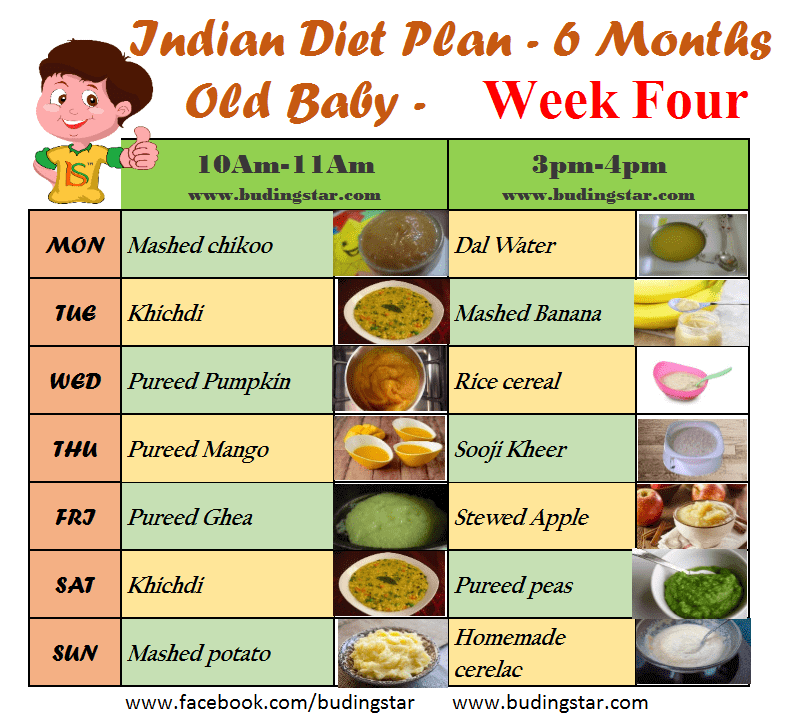 It is recommended to add it in small quantities, mixing with the main dish.
It is recommended to add it in small quantities, mixing with the main dish.
If the baby refuses to eat, it is recommended to shift the time. Perhaps the child did not have time to get hungry. Or you can go for a walk and work up an appetite.
All meals are served in order. Don't put everything on the table at once. In this case, the baby will be confused, will try to try everything at once.
It is necessary to introduce new products with caution, in turn, starting with small portions. At the same time, the reaction of a small organism to innovations is closely monitored. In case of allergic reactions, the product is completely excluded.
Sweets in the form of confectionery, sweets, chocolate are not offered to kids. Small amounts of honey, syrups, jams, dried fruits, cookies are allowed.
FAQ
What must be present in the menu of a child at 1 year old?
+
The diet must be present: meat, dairy products, fruits, vegetables, bread, butter. Fish and eggs are given up to three times a week.
Fish and eggs are given up to three times a week.
What are the most common mistakes parents make when preparing meals?
+
The most common mistake is a monotonous diet, consisting of the same products. It is important to try to feed your baby a variety of foods. This will allow him not only to get acquainted with new products, but also to replenish the stocks of necessary substances.
Is it permissible to include solid food in the diet if the teeth erupted a little?
+
Solid foods help form healthy eating habits. In addition, it is useful for teething. Hard pieces help form the correct bite.
Should I put my baby to sleep after eating?
+
After eating, the baby is drawn to sleep. However, putting him to bed right away is not right. If the child walked a lot, spent a lot of energy, in this case, yes, it is allowed to sleep after eating.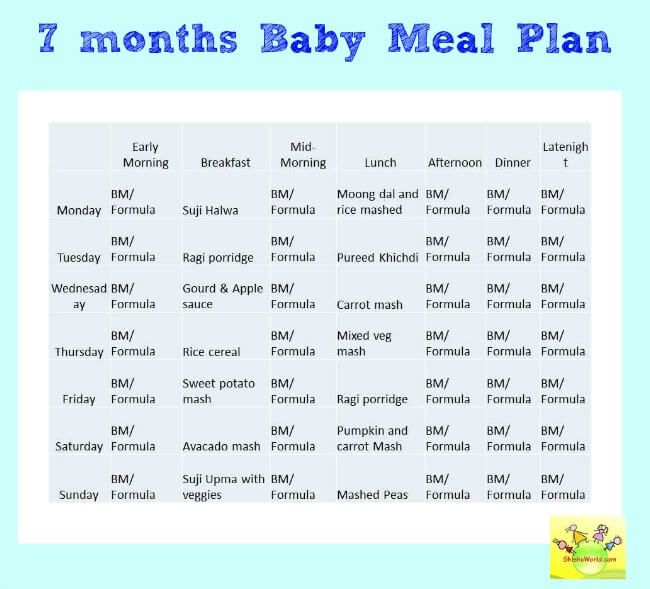

 For long walks, a snack is allowed two hours before the main meal.
For long walks, a snack is allowed two hours before the main meal. 